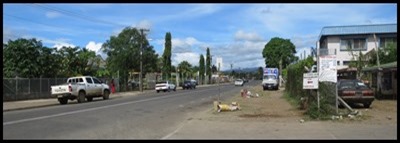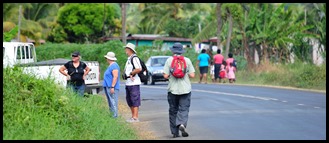Labasa Bimble

|
Labasa
Bimble
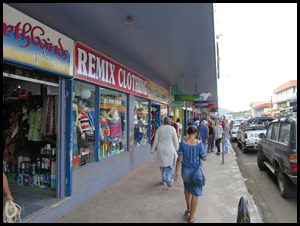   We left the cafe fortified and ready
to bimble. The High Street was a real mix of posh
sari shops, hideous shirts and every shaped torch known to man, all with a variety of
Bollywood classics softly or blaring as a ‘welcome’. The townsfolk were every
bit as friendly as in Savusavu.
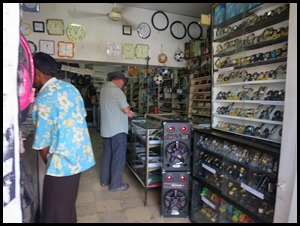 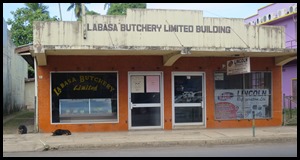  The clock, watch
and stereo shop, the butchers and Halford’s – Labasa style.
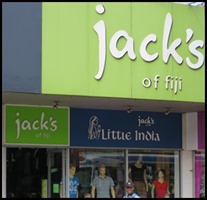 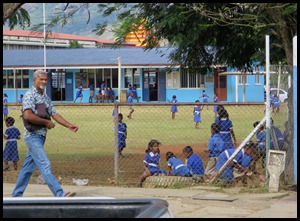 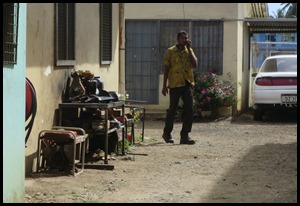 A high end fashion
shop called Jack’s, St.Mary’s Junior School
and a chap ‘phoning a friend’ for some engine
maintenance advice.
 Fijian, European
and Asian dress
Indo-Fijians are Fijians whose ancestors came from India and various parts of South Asia and South-East Asia. They number 313,798 (37.6%) (2007 census) out of a total of 827,900 people living in Fiji. They are mostly descended from indentured labourers, girmitiyas or girmit, brought to the islands by Fiji's British colonial rulers between 1879 and 1916 to work on Fiji's sugar cane plantations. These were complemented by the later arrival of Gujarati and Punjabi immigrants who arrived as free settlers in contrast to their counterparts who were brought under the indentured labour system. They have adapted to the new environment with changes to their dress, language and culinary habits, although they have maintained their distinct culture and physical appearance. The Indo-Fijians have fought for equal rights, although with only limited success. Many have left Fiji in search of better living conditions and social justice and this exodus has gained pace with the series of coups starting in the late 1980’s. Eighty seven voyages were made by forty ships that brought Indian Indentured Labourers to Fiji. Of these ships, twenty seven were sailing ships taking an average of seventy three days and thirteen were steam ships taking thirty days. On the fifteenth of May 1879, the first ship called the Leonidas carrying four hundred and sixty three pioneering sorts docked, the last called the Sutlej arrived on the eleventh of November 1916 carrying eight hundred and eighty eight. A total of 60,965 passengers left India but only 60,553 (including births at sea) arrived in Fiji. A total of 45,439 boarded ships in Calcutta and 15,114 in Madras. Average numbers compared to the 337 that went to St Kitts to the massive 453,063 that landed in Mauritius.
The six hundred yard
walk stated in the guide book was clearly an understatement as it was that far
to get to the edge of town. We turned left at the
petrol station and the Stealthies headed out into the
countryside asking anyone we saw for directions to the ‘head
stone’.
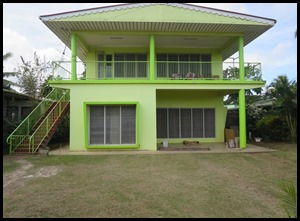 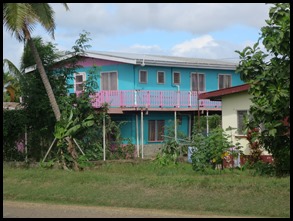 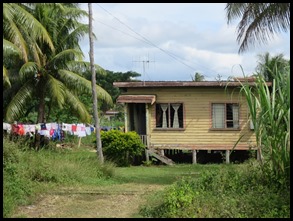 Some rather posh Berger Houses and a more humble
abode.
 Monday is clearly wash day wherever you are in the world.
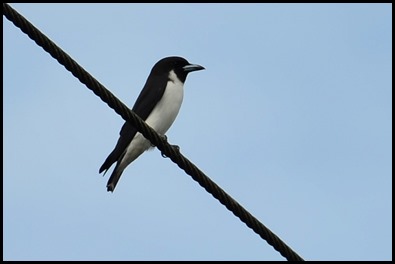  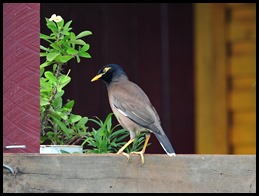 Two new
chaps – the woodswallow and the red-vented bulbul of course mynah birds were everywhere.
 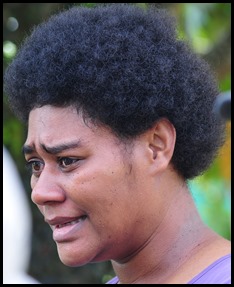 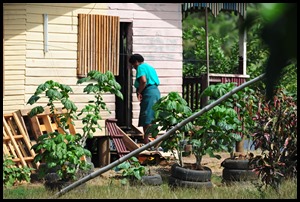 After about a half a mile we were
scooped up by a lady and followed her between some houses to the back garden,
there she pointed to the first of the sacred
stones, believed by the ancestors to have
grown out of the ground. Our guide explained that her extended family had formed a
village around these stones and had been here since 1984. The word ‘village’
should have rung alarm bells but we were none to the wise. A lady came over to
welcome us and then got about her day.
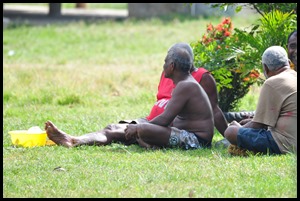 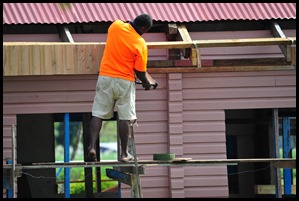 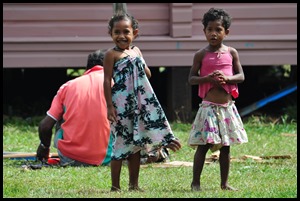 The elders
were sitting watching a younger man putting ‘eyebrows’ on the Kindergarten and a
couple of little girls saw us and posed.
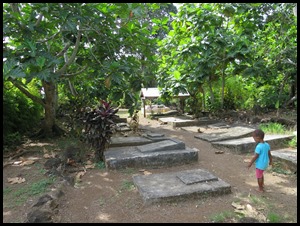 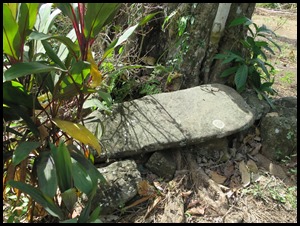 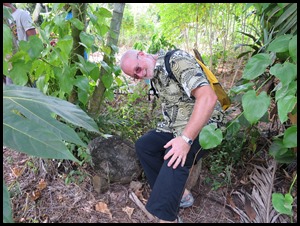 Our guide led us through the family graveyard, pointed to the vatu ni bokola
- the flat ‘head chopping’ stone and then
on to the brain serving stone that Bear clearly
couldn’t get down to.
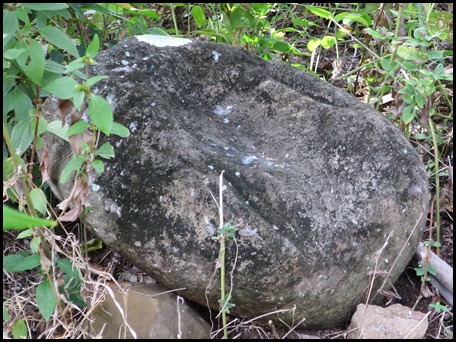 The reason for our visit. The bowl-like stone in which the brain was placed for the
chief. It was at this point our guide gently told us that on entering a village
we should present sevusevu. Oh dear. A certain certain amount of looking at feet
and admitting we were caught short. Note to self – always carry a bundle of kava
wherever we go, just in case we end up venturing into a village. We apologised
profusely, shook hands and made our exit.
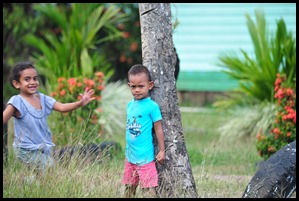   The children raced
in for a pose, the cow opposite was completely unfazed.
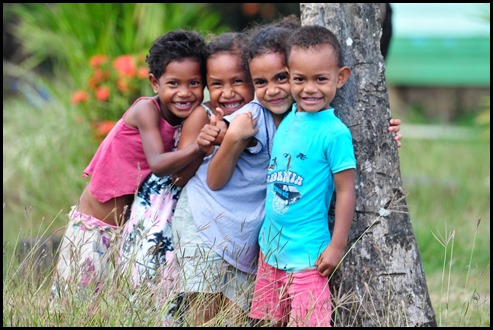 And then there were
four.
 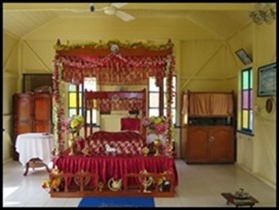 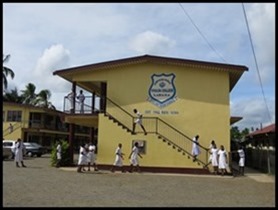 On our walk back to town we saw a
‘one careful owner’ to calm the nerves, made a quick
stop in a tiny temple and admired the smart Labasa College before needing a long, cool drink in the
highly recommended Chinese called the Oriental. Not an Indian restaurant to be
found anywhere, would you believe.
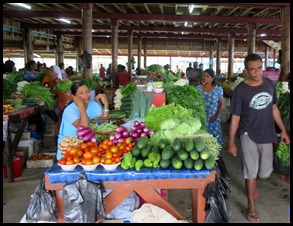 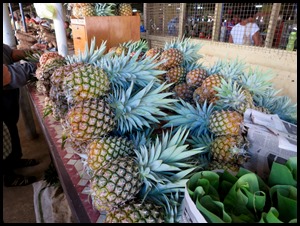 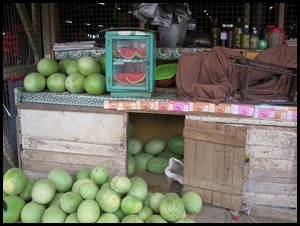 After our hearty meal we bimbled
around the market, huge compared to our one in
Savusavu.
 We crossed the Labasa
River.
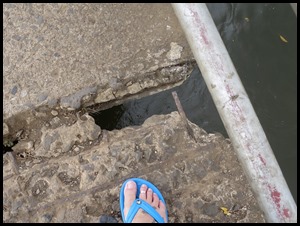 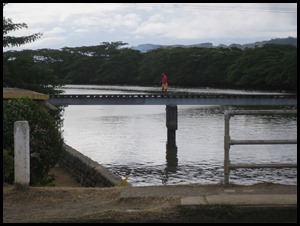 Over a pretty thread-bare bridge, parallel to the old
rail bridge that took the sugar cane to port five kilometres away.
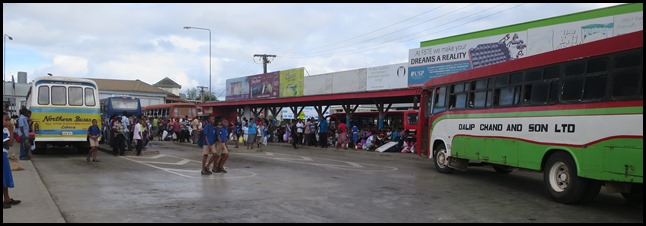 Then it was time to take on the bus station.
 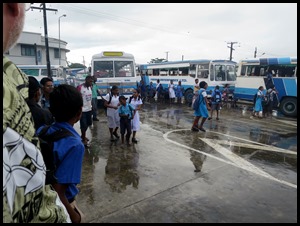 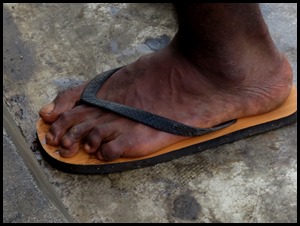 School
children appeared by the hundred, the heavens
opened and I took to studying feet of all
things to pass the time.
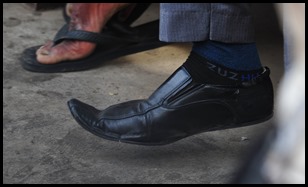 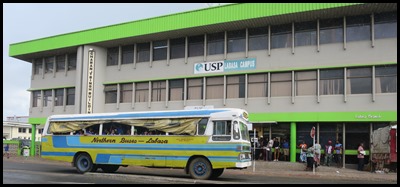 This young trendy has allowed for
‘growing room’. Then a very loud bus coughed in front
of the University.
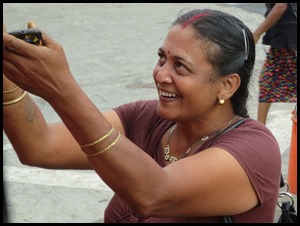 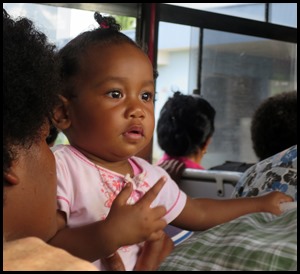  Happy face
waving off her family. A passenger fascinated by her
neighbour and our last Berger House of the day before
the rain was so hard we could see vey little. We chatted to one college lad who
was on the bus at six thirty each school day and after his walk from the bus
stop at the end of the day got home at six thirty. Supper, then economics and
geography homework. Indeed a very long day. We pulled in to our bus station in
heavy drizzle, just as we walked into the marina the heaviest of the days rain
fell – nothing for it but to stop for a cool one.
ALL IN ALL QUITE A DAY OF
AT-VENTURE
A FULL, INTERESTING AND VARIED DAY
|
